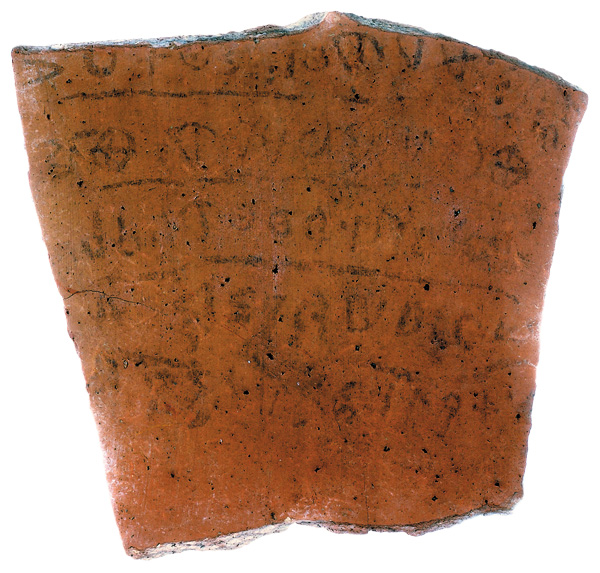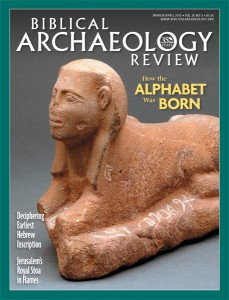Prize Find: Oldest Hebrew Inscription Discovered in Israelite Fort on Philistine Border

A little more than a year ago, we reported on a new excavation (directed by the Hebrew University’s Yosef Garfinkel and Saar Ganor) of an imposing Israelite fort on the border with Philistia dating to the late 11th–early tenth century B.C.E., the time of David and Solomon.a It was occupied during this period only and was then abandoned (until the Hellenistic period), so there is no question about the dating—and the implications are considerable.
The circular casemate wall around the hilltop fort required more than 200,000 tons of boulders. Some of the megalithic ashlars in the city’s carefully designed four-chambered gates weigh almost 5 tons. Try lifting these. It took a well-organized, technologically proficient state society to construct something like this. This fort was not built by some tribal chiefdom. Qeiyafa is thus a powerful antidote to scholars like Tel Aviv University’s Israel Finkelstein, who claims that Judah never existed as a state in the tenth century and that the “Kingdom” of David and Solomon was a tribal chiefdom at most.
Already a library member? Log in here.
Institution user? Log in with your IP address.

